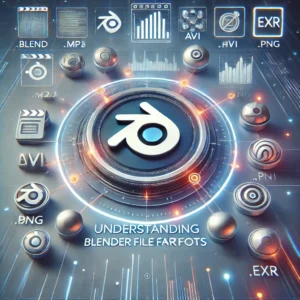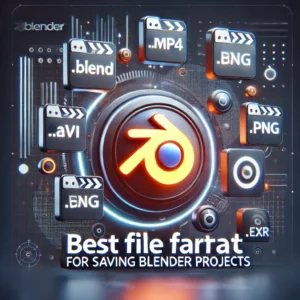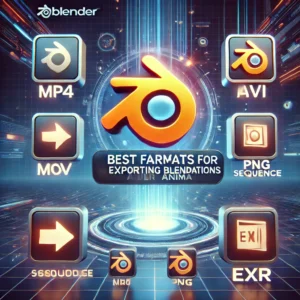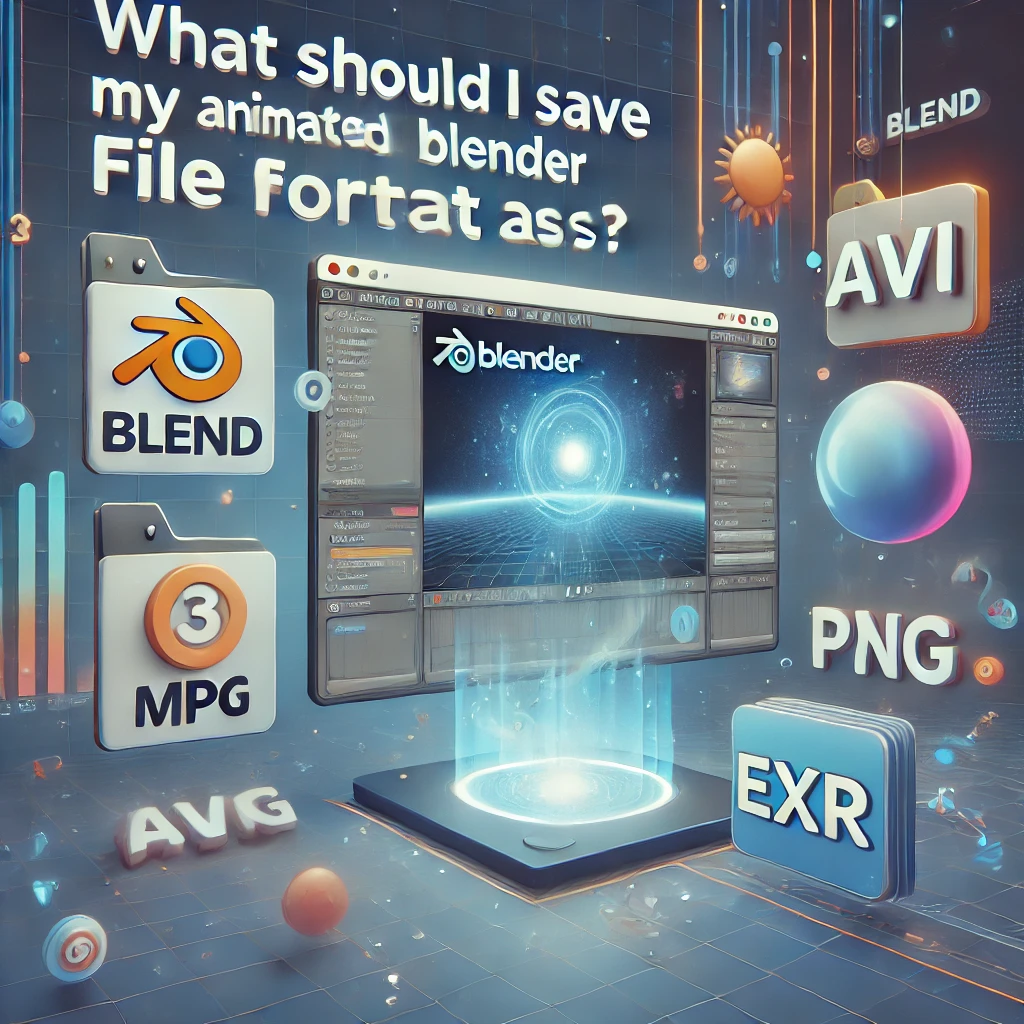Blender is a powerful open-source 3D creation suite used for animation, modeling, rendering, and more. When working on an animated project in Blender, choosing the right file format for saving and exporting is crucial. The format you choose will depend on several factors, including compatibility, file size, quality, and intended use.
This article will guide you through the best file formats for saving and exporting animated Blender projects, their pros and cons, and which one is best for different use cases.
Understanding Blender File Formats

Before diving into the best formats, it’s important to distinguish between saving your project and exporting an animation.
- Saving Your Project: This keeps your work in a format that Blender can read and edit later.
- Exporting an Animation: This converts your animation into a format that can be played in video players or used in other software.
Let’s look at the ideal formats for each scenario.
Best File Format for Saving Blender Projects

1. .BLEND (Blender’s Native File Format)
- Best for: Storing all project data
- Supports: Animation, modeling, textures, materials, and scripts
- Pros:
- Retains all Blender-specific features
- Includes animation keyframes and modifiers
- Saves lighting, physics, and rendering settings
- Can be reloaded and edited in Blender
- Cons:
- Not compatible with non-Blender software
- Larger file size compared to some exports
The .BLEND file is Blender’s default and recommended format for saving your animation projects. It preserves everything, including scene structure, animation rigs, and procedural settings. If you plan to continue working in Blender, always save your project as a .BLEND file.
Best Formats for Exporting Blender Animations

Once your animation is complete, you need to export it in a format suitable for playback, editing, or further processing. Here are the best formats based on different needs.
1. MP4 (H.264) – Best for General Use
- Best for: Sharing online, YouTube, social media
- Supports: High-quality video with small file size
- Pros:
- Highly compressed, reducing file size
- Compatible with most devices and platforms
- Good balance of quality and performance
- Cons:
- Slight loss of quality due to compression
- Not ideal for professional editing
If you need a final video format that’s widely supported and easy to share, MP4 with H.264 encoding is the best choice. It keeps your file size small while maintaining decent quality.
2. AVI – Best for Lossless Quality (Large Files)
- Best for: High-quality exports, further editing
- Supports: Lossless compression or raw video
- Pros:
- Supports high-resolution videos
- Can be used for further editing in software like Adobe Premiere
- Cons:
- Large file size
- Not optimized for web or streaming
AVI is a good option for high-quality animations but results in large files. If you need lossless quality for post-processing, AVI is a solid choice.
3. MOV – Best for Apple Devices and Professional Editing
- Best for: Apple users, professional video editing
- Supports: High-quality video with good compression
- Pros:
- Well-suited for Mac and iOS users
- Works well with Final Cut Pro and Adobe Premiere
- Cons:
- Can result in large files
- Not as widely compatible as MP4
If you’re working in a Mac-based environment or using Final Cut Pro, MOV is a better choice than MP4.
4. PNG Sequence – Best for Maximum Quality and Transparency
- Best for: Rendering frames individually, compositing
- Supports: Lossless image quality, alpha channel
- Pros:
- Every frame is saved as a separate image
- Can include transparency (alpha channel)
- No compression loss
- Cons:
- Large storage requirements
- Needs to be compiled into a video separately
If you need maximum quality and flexibility, a PNG sequence is a great option. It’s particularly useful for compositing in After Effects or other editing software.
5. EXR Sequence – Best for Advanced Compositing and VFX
- Best for: Professional compositing, VFX workflows
- Supports: HDR colors, transparency, deep color depth
- Pros:
- Supports 32-bit depth for better color grading
- Works best with high-end rendering and compositing
- Cons:
- Extremely large file sizes
- Requires special software to work with
If you’re working on high-end visual effects (VFX) or advanced post-production, OpenEXR (.EXR) sequences are ideal.
6. GIF – Best for Simple Animated Clips
- Best for: Small looping animations, memes
- Supports: Limited color palette (256 colors)
- Pros:
- Small file size
- Works on all browsers and platforms
- Cons:
- Limited to 256 colors, reducing quality
- No sound support
For short, looping animations, GIF is a great format, but it’s not recommended for high-quality renders.
Best Format Based on Your Needs
| Use Case | Best File Format |
| Saving Blender projects | .BLEND |
| Sharing online (YouTube, social media) | MP4 (H.264) |
| High-quality lossless video | AVI or MOV |
| Mac/iOS users | MOV |
| Editing in another software | AVI, MOV, or PNG sequence |
| Transparency required | PNG sequence or EXR |
| VFX or compositing | EXR sequence |
| Simple animations (memes, web use) | GIF |
How to Export an Animation in Blender
Step 1: Set Output Format
- Open Blender and go to the Output Properties tab.
- Under File Format, choose your preferred format (e.g., MP4, AVI, PNG Sequence).
- If using PNG/EXR sequences, select RGBA for transparency.
Step 2: Set Output Folder
- Click on Output Directory and choose where to save your files.
Step 3: Adjust Render Settings
- Set the resolution (1920×1080 for Full HD).
- Adjust the frame rate (30 FPS or 60 FPS for smooth animation).
Step 4: Render Animation
- Go to Render → Render Animation (Ctrl + F12).
- Wait for the rendering process to complete.
- If exporting an image sequence, use FFmpeg or video editing software to compile it into a video.
Final Thoughts
Choosing the right format for your Blender animation depends on your specific needs. If you’re continuing your project, save it as .BLEND. If you need a final video for sharing, MP4 (H.264) is the best choice. For high-quality exports, consider AVI, MOV, or PNG sequences.
By understanding these formats, you can optimize your workflow, maintain quality, and ensure compatibility with other software.
Would you like help with optimizing render settings for faster exports? Let me know!


